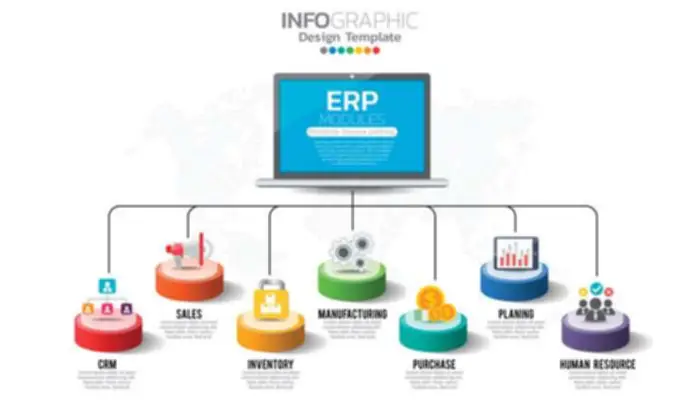Analytical ML applications sit in the company’s analytical stack and sometimes feed directly into stories, dashboards, and enterprise intelligence instruments. By using MLflow, we can easily observe mannequin versions and manage changes, guaranteeing reproducibility and the power to select the simplest machine learning in it operations mannequin for deployment. By integrating DVC, we will handle massive datasets effectively while maintaining the Git repository focused on source code. In order to remain forward of the curve and seize the complete value of ML, nonetheless, companies should strategically embrace MLOps.

Mlops Reside #20 Ft Hugging Face
MLOps aims to improve the effectivity and reliability of deploying ML fashions into production by providing clear tips and responsibilities for professionals and researchers. It bridges the hole between ML improvement and manufacturing, guaranteeing that machine studying models may be effectively developed, deployed, managed, and maintained in real-world environments. This method helps cut back system design errors, enabling more robust and correct predictions in real-world settings. Developing, deploying, and maintaining machine studying models in manufacturing can be challenging and complex. MLOps is a set of practices that automate and simplify machine studying (ML) workflows and deployments. In this article, I will be sharing some basic MLOps practices and tools by way of an end-to-end project implementation that will assist you to manage machine studying initiatives more effectively, from growth to manufacturing.
Bring Your Information Science To Life
Consider how to experiment on, retrain, and deploy new models in manufacturing with out bringing that model down or otherwise interrupting its operation. This thought of steady testing and deploying new models with out interrupting the existing mannequin processes known as steady integration. Kubeflow is a set of elements that you simply assemble to build and orchestrate ML pipelines on Kubernetes.

Implementation For Mannequin Coaching And Deployment
In the ever-evolving panorama of synthetic intelligence (AI) and machine learning (ML), staying forward of the curve is crucial. It’s not nearly growing groundbreaking ML models; it’s about efficiently deploying them to unravel real-world problems. This intersection of ML and operations, outlined as MLOps, is pivotal in the current AI panorama. In this complete article, we’ll discover the core of «what’s machine learning operations» and understand why it is more than just a buzzword. By understanding the MLOps definition and its transformative impression, you will acquire a deep and nuanced perspective on the complete lifecycle of ML initiatives, making certain that «ai MLOps» is no longer a mystery. As the importance of MLOps is defined additional, it is evident how important it’s in at present’s fast-paced ML operations panorama.
MLOps isn’t just about the expertise; it’s about the course of and the people, transforming machine studying from a science into a solution. Classical, or «non-deep,» machine learning is more depending on human intervention to learn. Human specialists decide the set of features to grasp the variations between information inputs, often requiring more structured data to be taught. Since deep studying and machine learning tend to be used interchangeably, it’s price noting the nuances between the two.

Developing ML fashions whose outcomes are comprehensible and explainable by human beings has turn out to be a precedence as a end result of speedy advances in and adoption of sophisticated ML methods, corresponding to generative AI. Researchers at AI labs corresponding to Anthropic have made progress in understanding how generative AI fashions work, drawing on interpretability and explainability methods. Reinforcement learning includes programming an algorithm with a definite goal and a set of rules to comply with in reaching that objective. The algorithm seeks constructive rewards for performing actions that transfer it nearer to its objective and avoids punishments for performing actions that transfer it further from the goal. Here is a Python instance that exhibits the varied elements of an MLOps pipeline using common libraries.
Let’s dive into the levels of the MLOps lifecycle and the way they contribute to effective ML model management. According to a survey by cnvrg.io, information scientists usually spend their time building options to add to their current infrastructure to find a way to complete initiatives. 65% of their time was spent on engineering heavy, non-data science duties such as monitoring, monitoring, configuration, compute resource administration, serving infrastructure, characteristic extraction, and mannequin deployment. MLOps is a set of techniques and practices designed to simplify and automate the lifecycle of machine studying (ML) techniques.
The complexity lies in scaling that model for production, making certain it could deal with evolving data, schemas, and necessities in a dependable, automated method. Since there isn’t significant legislation to regulate AI practices, there is not any real enforcement mechanism to guarantee that ethical AI is practiced. The present incentives for firms to be ethical are the unfavorable repercussions of an unethical AI system on the underside line. To fill the gap, ethical frameworks have emerged as a part of a collaboration between ethicists and researchers to control the construction and distribution of AI models inside society. Some research (link resides exterior ibm.com)4 reveals that the combination of distributed accountability and a lack of foresight into potential penalties aren’t conducive to preventing hurt to society. Answering these questions is a vital part of planning a machine learning project.
With Azure ML, customers can leverage quite so much of programming languages and frameworks while also benefiting from integration with different Azure services for seamless development and deployment pipelines. MLOps requires skills, tools and practices to successfully manage the machine learning lifecycle. They must perceive the whole knowledge science pipeline, from knowledge preparation and mannequin coaching to analysis. Familiarity with software program engineering practices like model management, CI/CD pipelines and containerization can be crucial. Additionally, information of DevOps ideas, infrastructure administration and automation instruments is crucial for the environment friendly deployment and operation of ML models. An MLOps automates the operational and synchronization elements of the machine studying lifecycle.
- This integration is the foundation of MLOps, the place the teams generate, deploy, and handle their machine-learning models effectively and effectively.
- The key benefit of utilizing Apache Spark, whether or not through AWS EMR, AWS Glue, or Databricks, lies in its capability to process giant datasets efficiently because of its distributed nature.
- For a smooth machine studying workflow, each data science team will need to have an operations group that understands the distinctive necessities of deploying machine learning fashions.
- Some well-liked examples of machine learning algorithms include linear regression, choice timber, random forest, and XGBoost.
- 65% of their time was spent on engineering heavy, non-data science tasks such as tracking, monitoring, configuration, compute useful resource administration, serving infrastructure, feature extraction, and mannequin deployment.
- Amid the enthusiasm, companies face challenges akin to these offered by previous cutting-edge, fast-evolving technologies.
These steps present a solid basis for managing machine studying initiatives using MLOps tools and practices, from growth to production. As you achieve expertise with these tools and methods, you probably can discover more advanced automation and orchestration methods to enhance your MLOps workflows. The aim of Machine Learning Operations (MLOps) is to efficiently and reliably deploy and preserve machine studying fashions in production. MLOps applies the most effective practices of software development and operations to machine learning and knowledge science, taking cues from DevOps. Strong and scalable MLOps pipelines have gotten essential as companies use machine studying (ML) increasingly more to generate enterprise worth.

Access JFrog ML to see how one of the best ML engineering and data science teams deploy fashions in manufacturing. MLflow is an open-source platform for managing the end-to-end machine studying lifecycle. It provides instruments for tracking experiments, packaging code into reproducible runs, and sharing fashions. Evidently AI is an efficient tool for monitoring model efficiency, detecting knowledge drift, and knowledge high quality over time. It helps ensure that the model stays correct and reliable as new information comes in.
It bridged the divide between the theoretical brilliance of AI and its sensible, operational challenges, ensuring that the «ai MLOps» paradigm truly reshaped industries. After versioning information with DVC, it’s crucial to maintain a clear document of mannequin coaching, model modifications, and parameter configurations, even if we’re not actively experimenting with a number of fashions. This project structure is designed to arrange the whole machine learning project, from growth to monitoring. Machine studying operations (ML Ops) is an emerging area that rests on the intersection of growth, IT operations, and machine learning. It aims to facilitate cross-functional collaboration by breaking down otherwise siloed teams.
In terms of building data processing pipelines for remodeling data into features—either for direct coaching use or for storage in a Feature Store—SageMaker offers a quantity of options. These embody operating Apache Spark jobs, using frameworks based mostly processing corresponding to scikit-learn, PyTorch, TensorFlow, and so forth., or creating customized processing logic in a Docker container. A processing job is often a part of a Model Build Pipeline, which integrates varied steps from knowledge processing to model deployment. At this degree, you’ve a very automated pipeline, from model development, versioning, to deployment.
Continuous training ensures that fashions keep up-to-date with the newest data and maintain their accuracy over time. This course of involves retraining fashions on new information and deploying up to date versions seamlessly. MLOps solves these problems by creating a unified workflow that integrates development and operations. This method reduces the risk of errors, accelerates deployment, and retains models efficient and up-to-date via continuous monitoring. Parallel training experiments allow operating multiple machine studying mannequin coaching jobs concurrently.
Ensure that team members can easily share knowledge and sources to ascertain constant workflows and best practices. For example, implement tools for collaboration, version control and project management, corresponding to Git and Jira. Next, primarily based on these considerations and finances constraints, organizations should decide what job roles will be necessary for the ML group.
Transform Your Business With AI Software Development Solutions https://www.globalcloudteam.com/ — be successful, be the first!
